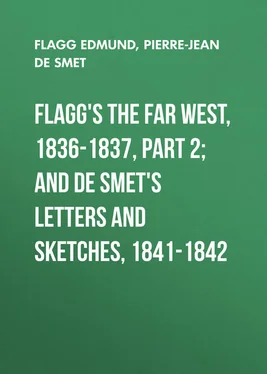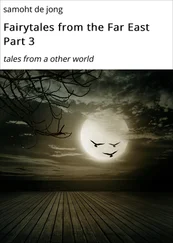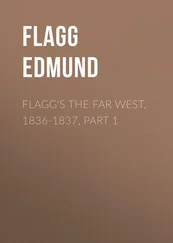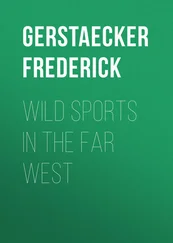Edmund Flagg - Flagg's The Far West, 1836-1837, part 2; and De Smet's Letters and Sketches, 1841-1842
Здесь есть возможность читать онлайн «Edmund Flagg - Flagg's The Far West, 1836-1837, part 2; and De Smet's Letters and Sketches, 1841-1842» — ознакомительный отрывок электронной книги совершенно бесплатно, а после прочтения отрывка купить полную версию. В некоторых случаях можно слушать аудио, скачать через торрент в формате fb2 и присутствует краткое содержание. Издательство: Иностранный паблик, Жанр: foreign_antique, foreign_prose, на английском языке. Описание произведения, (предисловие) а так же отзывы посетителей доступны на портале библиотеки ЛибКат.
- Название:Flagg's The Far West, 1836-1837, part 2; and De Smet's Letters and Sketches, 1841-1842
- Автор:
- Издательство:Иностранный паблик
- Жанр:
- Год:неизвестен
- ISBN:нет данных
- Рейтинг книги:4 / 5. Голосов: 1
-
Избранное:Добавить в избранное
- Отзывы:
-
Ваша оценка:
- 80
- 1
- 2
- 3
- 4
- 5
Flagg's The Far West, 1836-1837, part 2; and De Smet's Letters and Sketches, 1841-1842: краткое содержание, описание и аннотация
Предлагаем к чтению аннотацию, описание, краткое содержание или предисловие (зависит от того, что написал сам автор книги «Flagg's The Far West, 1836-1837, part 2; and De Smet's Letters and Sketches, 1841-1842»). Если вы не нашли необходимую информацию о книге — напишите в комментариях, мы постараемся отыскать её.
Flagg's The Far West, 1836-1837, part 2; and De Smet's Letters and Sketches, 1841-1842 — читать онлайн ознакомительный отрывок
Ниже представлен текст книги, разбитый по страницам. Система сохранения места последней прочитанной страницы, позволяет с удобством читать онлайн бесплатно книгу «Flagg's The Far West, 1836-1837, part 2; and De Smet's Letters and Sketches, 1841-1842», без необходимости каждый раз заново искать на чём Вы остановились. Поставьте закладку, и сможете в любой момент перейти на страницу, на которой закончили чтение.
Интервал:
Закладка:
The Nunnery at Kaskaskia is a large wooden structure, black with age, and formerly a public house. With this institution is connected a female seminary, in high repute throughout this region, and under superintendence of ten of the sisters. A new nunnery of stone is about being erected. 40
It was a glorious morning, and, with many a lingering step, I left behind me the village of old Kaskaskia. As I rode leisurely along the banks of that placid stream, and among the beautiful farms of the French settlers, I was more than once reminded forcibly of similar scenery high up the Kennebeck, in a distant section of Maine, known by the name of " Indian Old Point ," where I once took a ramble with a college classmate during an autumn vacation. The landscape is one of singular beauty; yet, were it otherwise, there is a charm thrown around this distant and lonely spot by its association with an interesting passage in the earliest history of the country. In the expressive language of an eloquent writer, who has made the place the scene of an Indian tale, the soil is fertilized by the blood of a murdered tribe . Here, one hundred years ago, stood the village of the Norridgewocks, a tribe of the powerful Abnaquis, who then held undisputed domination over the extensive wilds of the far East. Though possessing not the fierce valour of the Pequods, the sinewy vigour of the Delawares, the serpent-like subtlety of the Penobscots, the bell-toned idiom of the Iroquois, we are yet told they were a powerful tribe for their intelligence and their numbers. The Jesuit missionaries of Canada, while at this era they were gliding upon the beautiful rivers of the distant West, had not neglected the steril rocks of the equally remote East: and the hamlet of the Norridgewocks had early been subjected to the influences of the fascinating ceremony and the lofty ritual of the Catholic faith. Under the guidance of the devoted Sebastian Rasle, a rude church was erected by the natives, and its gray, cross-crowned spire reared up itself among the low-roofed wigwams. Beloved by his savage flock, the venerable Father Rasle lived on in peacefulness and quietude for thirty years in the home of his adoption. During the troubled period of the "French and Indian War" which ensued, suspicions arose that the Norridgewocks were influenced by their missionary to many of their acts of lawless violence upon a village of English settlers but a few miles distant. In the autumn of 1724 this distrust had augmented to a conviction that the Abnaquis had resolved on the extermination of the white race, and a detachment of soldiers ascended the Kennebeck. It was a bright, beautiful morning of the Sabbath when they approached the Indian hamlet. The sweet-toned bell of the little chapel awoke the echoes with its clear peal, and announced the hour of mass just as the early sunlight was tinting the far-off hill-tops. A few moments, and every living soul in the village was within the church, and had bowed in humbleness before the "Great Spirit." The deep tones of the venerable Rasle were supplicating, " Ora, ora pro nobis ," when the soldiers rushed in. Terrible and indiscriminate was the massacre that ensued. Not one was spared; not one ! The pious Rasle poured out his heart's blood upon the altar of his devotion. Those of the natives who escaped from the chapel were either shot down or perished miserably in the river, their bark canoes having been previously perforated by the treachery of their foes. 41The drowsy beams of that day's setting sun dreamed beautifully as ever among the fragrant pine-tops and the feathery hemlocks of the river-bank; but his slanting rays smiled upon the ancient hamlet beneath whose ashes its exterminated dwellers were slumbering the last sleep!
The grave of Father Rasle, a green mound overlooking the stream, was pointed out to us. A granite obelisk to his memory was erected by Bishop Fenwick, of Boston, a few years since, but was demolished by a party of miscreants soon after its completion. My object in this lengthened episode upon the Norridgewocks, so casually introduced, has been twofold: to illustrate the peaceful policy of the French towards the Indian all over the continent, and to contrast it with that of other Europeans.
The ride from Kaskaskia to Prairie du Rocher in early autumn is truly delightful. Crossing Aubuchon , formerly called St. Philippe – a passage from the Mississippi to the Kaskaskia, about four miles above the town, and through which, in high floods, a rapid current passes from one river to the other – the path lay through a tract of astonishing fertility, where the wild fruit flourishes with a luxuriance known to no other soil. Endless thickets of the wild plum 42and the blackberry, interlaced and matted together by the young grape-vines streaming with gorgeous clusters, were to be seen stretching for miles along the plain. Such boundless profusion of wild fruit I had never seen before. Vast groves of the ruby crab-apple, the golden persimmon, 43the black and white mulberry, 44and the wild cherry, 45were sprinkled with their rainbow hues in isolated masses over the prairie, or extended themselves in long luxurious streaks glowing in the sun. The pawpaw, 46too, with its luscious, pulpy fruit; the peach, the pear, and the quince, all thrive in wild luxuriance here; while of the nuts, the pecan or Choctaw nut, the hickory, and the black walnut, are chief. As for grapes, the indigenous vines are prolific; and the fruit is said to be so excellent, that wine might be, and even has been, made from them, and has been exported by the early French in such quantities to France, that the trade was prohibited lest the sale of a staple of that kingdom should be injured! But all this is undoubtedly exaggeration, if no more. Although the grape and the wine of southern Illinois have long been the theme of the traveller through that delightful region, from the worthy Father Hennepin, who tells us of the purple clusters lending their rich hues to the gliding wave, to the tourist of the present day, yet from personal observation I am confident they are now by no means of much importance, and from good authority am inclined to think they never were so. As to the manufacture of wine becoming a matter interesting to commerce, there is no probability of that. A kind of liquor was formerly made in some quantities from what is called the winter grape , common to the same latitude in many portions of the United States, but it is said to have been a very indifferent beverage. It was made in the following simple manner: the clusters were heaped in broad, shallow vessels of wood, and, after being crushed, the juice was expressed through perforations for the purpose in the sides and bottom, by the application of heavy weights, into vessels prepared for its reception. Slight fermentation then completed the process. 47
A ride of some hours through this delightful region brought me to the bluffs, which, at this point extending into the plain, confine the bottom to a narrow strip, bounded on the one side by the Mississippi, and on the other by the battlement of the cliffs, upward of an hundred feet in height. Beneath lies the French village of Prairie du Rocher , so called from its situation. 48It is thirteen miles from Kaskaskia, and its low cottages scattered along, like the tents of a nomadic tribe, for miles, are completely overhung by the huge, beetling crags above. From the deep alluvion along the river's verge rises an enormous growth of cottonwood-trees and sycamores, concealing the stream from the view. From the bluffs to this belt of forest stretches away the vast common field , rustling with maize. The castor-bean and tobacco-plant are also often seen carpeting the ground with emerald. Around each tenement, as usual, is a plat of cultivated land, and the luxuriance of vegetation is unrivalled. Passing these outskirts, I at length arrived at the body of the village, lying upon a creek or bayou of the same name, which winds through its centre, and empties into the Mississippi. This quiet stream was once the scene of a very bloody tragedy. When Illinois first came under territorial government, and courts of civil judicature were established, the functionaries of the law, in passing one day from Cahokia to Kaskaskia, to hold at the latter place a session, stopped a few moments at this creek to water their horses. The animals had scarcely begun to drink, when a shower of balls from an adjoining thicket laid three of the party weltering in their blood. 49They had neglected the usual precaution to disguise themselves in the garb of the French villagers; and such was the hostility of the Indian tribes, especially that of the Kickapoos, to our countrymen at the time, that to travel in American costume was almost inevitable death. The Indians at that day had the ascendency in point of population, and the Kaskaskia tribe, as well as others, was powerful.
Читать дальшеИнтервал:
Закладка:
Похожие книги на «Flagg's The Far West, 1836-1837, part 2; and De Smet's Letters and Sketches, 1841-1842»
Представляем Вашему вниманию похожие книги на «Flagg's The Far West, 1836-1837, part 2; and De Smet's Letters and Sketches, 1841-1842» списком для выбора. Мы отобрали схожую по названию и смыслу литературу в надежде предоставить читателям больше вариантов отыскать новые, интересные, ещё непрочитанные произведения.
Обсуждение, отзывы о книге «Flagg's The Far West, 1836-1837, part 2; and De Smet's Letters and Sketches, 1841-1842» и просто собственные мнения читателей. Оставьте ваши комментарии, напишите, что Вы думаете о произведении, его смысле или главных героях. Укажите что конкретно понравилось, а что нет, и почему Вы так считаете.












